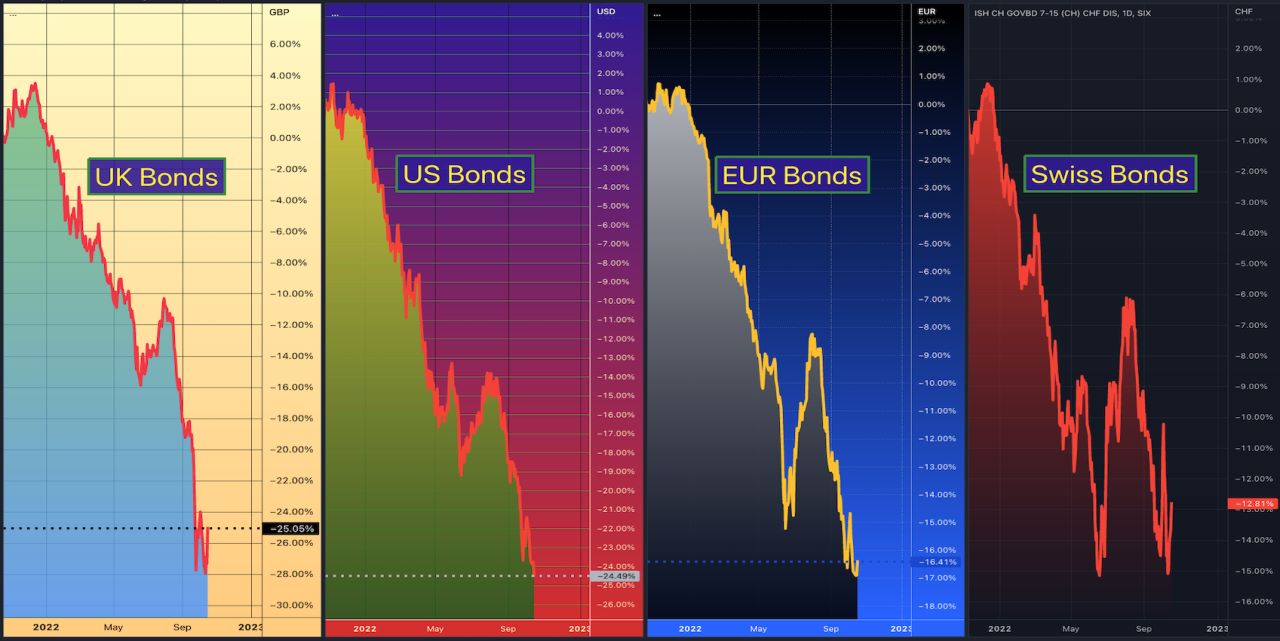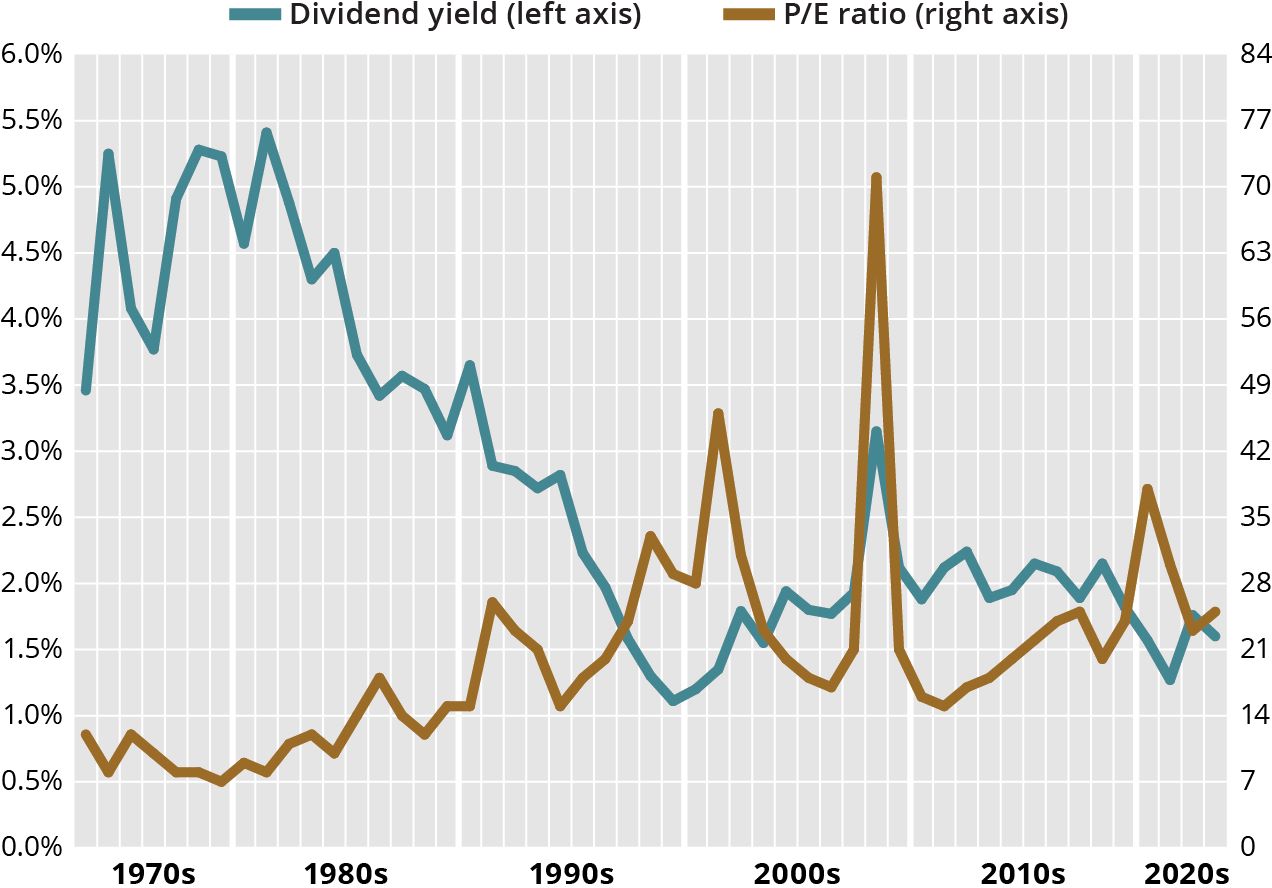

Finance
What Types Of Assets Do Pension Funds Own?
Published: January 23, 2024
Discover the diverse range of assets held by pension funds in the finance sector. Learn about the various investment options and strategies employed by these funds.
(Many of the links in this article redirect to a specific reviewed product. Your purchase of these products through affiliate links helps to generate commission for LiveWell, at no extra cost. Learn more)
Table of Contents
Introduction
When it comes to pension funds, one of the key considerations is the composition of their investment portfolios. Pension funds are tasked with the responsibility of ensuring the long-term financial security of their beneficiaries, and as such, they carefully allocate their assets across various investment classes to achieve a balance of risk and return. Understanding the types of assets that pension funds own provides valuable insight into their investment strategies and the potential impact on the broader financial markets.
In this article, we will explore the diverse range of assets that pension funds typically hold in their investment portfolios. From equities and fixed income securities to real estate, infrastructure, private equity, hedge funds, commodities, and cash equivalents, each asset class plays a unique role in shaping the overall risk and return profile of pension fund investments. By delving into the specifics of each asset type, we can gain a deeper understanding of how pension funds navigate the complex landscape of financial markets to fulfill their fiduciary duties.
Equities
Equities, also known as stocks, represent ownership shares in publicly traded companies. Pension funds often allocate a significant portion of their portfolios to equities due to their potential for long-term capital appreciation and dividend income. By investing in a diversified range of equities across various industries and geographic regions, pension funds aim to capture the growth potential of the global stock market while managing the associated risks.
Equities provide pension funds with the opportunity to participate in the success and profitability of leading corporations, thereby contributing to the overall growth of their investment portfolios. While equities are known for their volatility, pension funds with longer time horizons can harness the power of compounding returns to mitigate short-term market fluctuations and benefit from the wealth-building potential of high-quality stocks.
Furthermore, pension funds may engage in active stock selection or opt for passive index-based strategies, such as investing in exchange-traded funds (ETFs) or index funds that replicate the performance of broad market indices. This approach allows pension funds to gain exposure to a diversified basket of equities while minimizing the impact of individual stock volatility on their overall portfolio performance.
Fixed Income Securities
Fixed income securities, such as bonds and bond funds, play a crucial role in the investment portfolios of pension funds. These instruments represent debt obligations issued by governments, municipalities, corporations, and other entities, offering regular interest payments and the return of principal upon maturity. Pension funds allocate a portion of their assets to fixed income securities to achieve a balance between potential capital appreciation from equities and the stability and income provided by bonds.
Within the realm of fixed income, pension funds may invest in a variety of bond types, including government bonds, corporate bonds, municipal bonds, and mortgage-backed securities. Each category carries its own risk and return characteristics, allowing pension funds to tailor their fixed income allocations based on their investment objectives and risk tolerance.
Fixed income securities are valued for their ability to generate consistent income streams, making them particularly attractive for pension funds seeking to meet ongoing pension payment obligations. Additionally, bonds and bond funds serve as a crucial diversification tool, helping pension funds mitigate the impact of equity market volatility and preserve capital during periods of market turbulence.
Moreover, fixed income investments offer pension funds the opportunity to manage interest rate risk and credit risk through careful selection of bond maturities, credit ratings, and sector exposures. By constructing a well-diversified fixed income portfolio, pension funds can enhance the resilience of their overall investment strategy and provide a measure of stability in the face of market uncertainties.
Real Estate
Real estate investments form a significant component of pension fund portfolios, offering exposure to tangible assets such as residential properties, commercial real estate, and infrastructure projects. By allocating capital to real estate, pension funds seek to diversify their holdings and capture the potential for rental income, property appreciation, and inflation hedging.
Within the real estate asset class, pension funds may invest directly in properties or participate in real estate investment trusts (REITs) and real estate funds. Direct real estate investments involve acquiring and managing physical properties, providing pension funds with the opportunity to generate rental income and benefit from property value appreciation over time. REITs, on the other hand, offer a liquid and diversified approach to real estate investing, allowing pension funds to access income-generating properties without direct ownership.
Real estate investments are valued for their potential to deliver stable cash flows, diversification benefits, and a hedge against inflation. Additionally, the long-term nature of real estate holdings aligns with the liabilities of pension funds, making it an attractive asset class for meeting long-term pension obligations.
Furthermore, real estate investments exhibit low correlation with traditional financial assets such as stocks and bonds, providing pension funds with an avenue to enhance portfolio diversification and reduce overall investment risk. By incorporating real estate into their portfolios, pension funds can access a unique set of risk-return characteristics that complement traditional asset classes and contribute to the overall resilience of their investment strategy.
Infrastructure
Infrastructure investments encompass a broad spectrum of essential physical assets, including transportation networks, energy facilities, water and waste management systems, and communication infrastructure. Pension funds are increasingly drawn to infrastructure investments due to their potential to generate long-term, stable cash flows while providing diversification benefits and inflation protection.
Investing in infrastructure allows pension funds to participate in projects that underpin economic development and societal functioning. These investments often involve long-lived assets with predictable revenue streams, making them well-suited for matching the long-term liabilities of pension funds associated with funding retirement benefits.
Moreover, infrastructure investments exhibit low correlation with traditional financial markets, offering pension funds an opportunity to enhance portfolio diversification and reduce overall investment risk. By allocating capital to infrastructure projects, pension funds can access an asset class that is relatively insulated from the short-term volatility of public equity and bond markets.
Furthermore, infrastructure investments can provide a hedge against inflation, as the revenue generated from essential infrastructure assets tends to be linked to inflation or enjoys regulatory protection that supports stable pricing power. This characteristic aligns with the long-term nature of pension fund liabilities and serves to mitigate the erosion of real purchasing power over time.
Additionally, pension funds may access infrastructure investments through various vehicles, including direct ownership of infrastructure assets, investment in infrastructure funds, or participation in public-private partnerships. Each approach offers distinct advantages in terms of risk management, operational control, and liquidity, allowing pension funds to tailor their infrastructure allocations to align with their specific investment objectives and risk tolerance.
Private Equity
Private equity investments represent ownership stakes in privately held companies or non-publicly traded businesses. Pension funds allocate capital to private equity to access the potential for high returns and portfolio diversification, as well as to participate in the growth and value creation of private enterprises.
Private equity investments are characterized by their long-term investment horizon, typically spanning several years, and their focus on active involvement in the strategic and operational enhancement of portfolio companies. Pension funds may engage in private equity through direct investments, co-investments alongside private equity firms, or investments in private equity funds managed by experienced professionals.
One of the primary attractions of private equity for pension funds is the potential for substantial capital appreciation. By supporting the growth and expansion of private companies, pension funds aim to capture the value creation that often occurs as these businesses evolve and mature. Additionally, private equity investments offer the opportunity to access sectors and markets that may not be readily available through public equity investments, thereby enhancing the diversification of the pension fund’s portfolio.
Furthermore, private equity investments are illiquid in nature, requiring a long-term commitment of capital. While this illiquidity presents challenges in terms of portfolio rebalancing and liquidity management, it also aligns with the long-term liabilities of pension funds, as they seek to secure financial resources for future pension payments over extended time horizons.
Moreover, private equity investments often involve active engagement with portfolio companies, enabling pension funds to contribute strategic guidance, operational expertise, and governance oversight. This level of involvement allows pension funds to have a direct impact on the performance and value creation of their private equity holdings, further aligning with their long-term investment objectives.
Hedge Funds
Hedge funds are alternative investment vehicles that employ a diverse range of strategies to generate returns while managing risk. Pension funds may allocate a portion of their assets to hedge funds to access specialized investment approaches that aim to deliver positive returns in various market conditions, often with low correlation to traditional asset classes.
One of the key attractions of hedge funds for pension funds is their potential to provide downside protection and mitigate volatility during market downturns. Hedge fund managers often utilize sophisticated techniques, such as long-short equity strategies, global macro approaches, and relative value arbitrage, to seek out opportunities and manage risk in dynamic market environments.
Furthermore, hedge funds may offer access to niche markets, specialized investment themes, and unique trading strategies that are not readily available through traditional investments. This can provide pension funds with additional diversification benefits and the potential to enhance risk-adjusted returns within their overall investment portfolios.
Moreover, hedge funds often exhibit a degree of flexibility in their investment mandates, allowing managers to adapt to changing market conditions and capitalize on emerging opportunities. This agility can be particularly valuable for pension funds seeking to navigate evolving market dynamics and capture returns across different economic cycles.
It’s important to note that hedge funds typically involve higher fees and less transparency compared to traditional investment vehicles, and they may also have liquidity constraints. While these factors present considerations for pension funds, the potential for enhanced diversification, risk management, and return generation can make hedge funds a compelling component of a well-structured investment portfolio.
Commodities
Commodities, including natural resources such as oil, gold, agricultural products, and industrial metals, represent a distinct asset class that pension funds may include in their investment portfolios. Investing in commodities allows pension funds to gain exposure to physical assets with intrinsic value, providing potential diversification benefits and a hedge against inflationary pressures.
One of the primary attractions of commodities for pension funds is their potential to serve as a store of value and a hedge against inflation. Certain commodities, such as precious metals and energy resources, have historically exhibited a tendency to retain value or appreciate during periods of inflation or economic uncertainty, making them valuable components of a diversified investment strategy.
Moreover, commodities often demonstrate low correlation with traditional financial assets such as stocks and bonds, offering pension funds an opportunity to enhance portfolio diversification and reduce overall investment risk. By including commodities in their portfolios, pension funds can access an asset class that may respond differently to market dynamics, thereby contributing to the resilience of their investment strategy.
Furthermore, investing in commodities allows pension funds to gain exposure to global supply and demand dynamics, as well as geopolitical and macroeconomic factors that can influence commodity prices. This exposure can provide diversification benefits and potentially enhance the risk-adjusted returns of the overall investment portfolio, particularly during periods of market volatility or economic stress.
It’s important to note that investing in commodities carries unique considerations, including the need for specialized knowledge of commodity markets, storage and handling requirements for certain physical commodities, and the use of derivative instruments to gain exposure to commodity price movements. Pension funds may access commodities through various channels, including commodity futures, exchange-traded funds (ETFs), and commodity-focused mutual funds, each offering distinct characteristics and considerations for portfolio construction.
Cash and Cash Equivalents
Within the investment portfolios of pension funds, cash and cash equivalents play a vital role in providing liquidity, capital preservation, and strategic flexibility. Cash equivalents typically include short-term, high-quality instruments that can be readily converted into cash with minimal risk of principal loss, offering pension funds the ability to meet short-term funding needs and capitalize on investment opportunities as they arise.
One of the primary functions of cash and cash equivalents in pension fund portfolios is to ensure liquidity for meeting ongoing pension payment obligations and funding operational expenses. By maintaining a portion of their assets in cash and liquid instruments such as Treasury bills, money market funds, and commercial paper, pension funds can readily access funds when needed without being compelled to sell longer-term investments at inopportune times.
Moreover, cash and cash equivalents serve as a risk management tool, providing a cushion against market volatility and unexpected cash outflows. In times of market turbulence or economic uncertainty, the presence of ample cash reserves can offer stability and mitigate the need for forced asset sales, thereby supporting the overall resilience of the investment portfolio.
Furthermore, cash and cash equivalents offer strategic flexibility, enabling pension funds to take advantage of investment opportunities that may arise during market dislocations or periods of asset repricing. Having readily available cash positions allows pension funds to deploy capital efficiently, whether for rebalancing purposes, capitalizing on market downturns, or participating in new investment offerings.
It’s important to note that while cash and cash equivalents provide essential liquidity and risk management benefits, they may also be subject to the impact of low interest rates and inflation. Pension funds must carefully balance the allocation to cash and cash equivalents with the need to generate sufficient returns to meet long-term investment objectives and preserve the purchasing power of their assets over time.
Conclusion
As we delve into the diverse array of assets that pension funds own, it becomes evident that these institutional investors employ a strategic and multifaceted approach to portfolio construction. Equities, fixed income securities, real estate, infrastructure, private equity, hedge funds, commodities, and cash equivalents collectively form a comprehensive investment landscape that enables pension funds to pursue their long-term financial objectives while managing risk and generating returns.
Each asset class serves a distinct purpose within the investment portfolios of pension funds. Equities offer the potential for long-term growth and dividend income, while fixed income securities provide stability, income, and diversification. Real estate and infrastructure investments contribute tangible assets, stable cash flows, and inflation protection, aligning with the long-term liabilities of pension funds.
Private equity and hedge funds introduce alternative strategies and specialized approaches to return generation and risk management, while commodities offer exposure to physical assets and potential inflation hedging benefits. Cash and cash equivalents, on the other hand, provide essential liquidity, risk management, and strategic flexibility within pension fund portfolios.
By carefully balancing and integrating these diverse asset classes, pension funds aim to construct resilient and well-diversified investment portfolios that can weather market fluctuations, meet long-term pension obligations, and capture opportunities for value creation and growth. Moreover, the strategic allocation across these asset classes reflects the prudent and forward-looking approach that pension funds adopt in fulfilling their fiduciary duties and safeguarding the financial security of their beneficiaries.
In navigating the complexities of global financial markets, pension funds continue to adapt their investment strategies to align with evolving economic conditions, regulatory requirements, and long-term demographic trends. The ongoing pursuit of optimal asset allocation, risk management, and investment performance underscores the critical role that pension funds play in shaping the broader landscape of institutional investing and capital markets.
Ultimately, the types of assets that pension funds own not only reflect their commitment to prudently stewarding financial resources but also underscore their pivotal role in driving sustainable economic growth, fostering innovation, and supporting the long-term prosperity of retirees and future generations.














